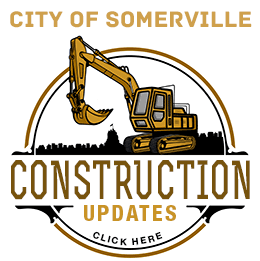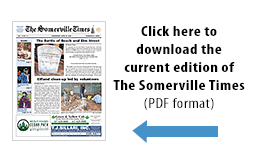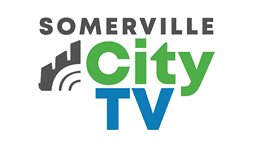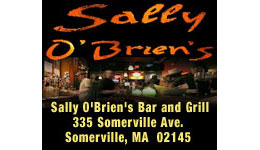(The opinions and views expressed in the commentaries and letters to the Editor of The Somerville Times belong solely to the authors and do not reflect the views or opinions of The Somerville Times, its staff or publishers)
By Michael Carlson
As the Somernova development barrels toward approval in Somerville, Mass., with the promise of transforming a quiet industrial campus into 1.6 million square feet of commercial, research, and so-called innovation space, it’s worth asking a basic question—Who is this for?
I first became aware of the proposal last October, when the city announced a series of public meetings to discuss proposed zoning changes. At the very first session, a senior city staff member asked me to move to the back of the room. The front, they said, was “reserved for stakeholders.” The irony wasn’t lost on me: I live within 30 feet of the project site and had introduced myself as a direct abutter. But somehow, I wasn’t considered a stakeholder. That moment stayed with me.
I’ve lived in Somerville for years. I’ve walked these blocks, watched triple-deckers turn into condos, and seen the arrival of high-end coffee shops, new rail stations, and growing corporate footprints. Change is part of life here, and I’m not opposed to it. In fact, transformative change is needed to build the affordable housing Somerville desperately needs and to create space for new enterprises. If that change happens in my backyard, so be it. But residents and longtime community members deserve a voice in what that change looks like. And from my very first meeting, it’s felt like we’ve been quietly, consistently told to sit down and stay out of the way.
Public Process Meets Private Interest
The irony is that we’ve already had this conversation—at length. When Somerville overhauled its zoning ordinance in 2019, it followed nearly a decade of workshops, working groups, and public hearings. It was, in other words, a public process. The resulting code emphasized clarity and predictability. It prioritized height and density near major transit hubs—not in the middle of residential neighborhoods.
Now, just a few years later, a single project seeks to bypass that work entirely.
The proposed Somernova redevelopment covers 7.4 acres between Union and Porter Squares. It would introduce buildings up to 200 feet tall into a neighborhood largely defined by triple-deckers and modest apartment buildings. It would replace the city’s Fabrication (FAB) District – zoning initially intended to preserve old industrial spaces for artists and makers – with new zoning that does little to protect either. Just eight percent of the site would be reserved for arts-related uses, and even that figure can be negotiated down. Gone is the emphasis on adaptive reuse and local creativity. In its place: glass towers, corporate R&D, and a developer-led master plan – positioned as a hub for climate-focused and so-called tough-tech enterprises.
And the timing is curious: commercial real estate is still facing headwinds, and even as climate-focused enterprises gain urgency, public and private investment in tough-tech continues to retrench.
The developer is seeking a tailor-made zoning overlay that would sidestep many of the public review mechanisms that typically apply to developments of this scale. It would enshrine the developer’s preferences into the city’s zoning code – without offering a detailed final plan. And once granted, this zoning relief isn’t easily undone. With their real estate value dramatically increased by the upzoning, the developer could revise the project or sell it altogether. The city loses its leverage the moment it rewrites the rules.
When Housing Means Hotels
One provision deserves special attention. The proposed ordinance reclassifies “lodging” – think hotels and motels—as residential housing. That language matters. Under the Massachusetts Housing Choice Act, zoning amendments that include residential uses can pass with a simple majority – just six of eleven City Council votes – instead of the two-thirds supermajority typically required. The inclusion of lodging as residential housing in this overlay triggers that threshold. The result is a faster, quieter path to approval for a project that will reshape an entire section of the city – without the kind of consensus-building or scrutiny that similar efforts once demanded and without requiring the developer to build a single residential housing unit.
Growth Deserves a Public Mandate
Concerns about this approach – and the project more broadly – have been voiced by the city’s own appointed experts. In an August 2024 letter to the Planning Board and City Council, the Somerville Urban Design Commission, a panel of design professionals, warned that the plan prioritizes building mass over open space, pushes public areas to the margins, and risks establishing a new precedent for density in the Somerville Avenue corridor—all without sufficient public debate. Their concerns are not abstract; they speak directly to how we build community, share space, and determine who benefits when the rules are rewritten.
The City Council and Planning Board will ultimately decide whether this zoning amendment moves forward. While the Union Square Neighborhood Council – an all-volunteer group recognized by the city – has worked in good faith to represent community concerns, it does not have the political power or legal authority to shape zoning outcomes. Its role is limited to negotiating Community Benefit Agreements, which offer some mitigation but do not address the deeper structural questions at play – or substitute for a true public mandate.
This isn’t a debate about whether Somernova should grow. It’s about how it grows – and who gets to shape that future. Somerville doesn’t need to rubber-stamp growth to prove it welcomes it. But it does need to honor the public process it worked so hard to build. This proposal asks us to bypass that process in favor of a single, developer-authored vision. If adopted, the new overlay would create ripple effects – in traffic, affordability, civic precedent, and neighborhood identity – for decades.
Before we rewrite the rules for 7.4 acres of Somerville, we should be clear about what’s being given up – and by whom. When neighbors are literally asked to move to the back of the room, it’s worth asking again:
Who is this for? Are we rewriting zoning to serve Somerville residents—or a developer?
Michael Carlson is a Somerville resident and former chair of the Somerville Ward 2 Democratic Committee.















There was clearly some morning when Somerville municipal government woke up and decided we wanted to new-urbanism our way into the Kendall Big Tech version of Cambridge, and not the minimally-socialized gonzo art hippies with Turing machines and better food who personally hang out with Noam Chomsky version of Cambridge.
On the other hand, the neighbors remain rad, and the Green Line I was sold in 2007 is here. The neighbors remain rad. The hawks remain thirsty for rat souls. We’re hanging in there.
Honorable and smart writer! Thanks! Worth questioning the process whereby by which city officials bypass many years of community input,, and is designing new zoning to a developer’s specs on a site far from transit with small homes and rentals on small streets There’s not a guarantee that there will be housing included. Middle ground preserves liveable quality of life for hundreds and could also make our city proud of successful development. Both/and, liveability and growth. Especially in this market and regulatory environment. thanks
Thanks for pointing out both aspects: how the project is oversized for its location and possibly, too, the economic environment and how, after thought we were giving our time to a good–faith collaborative process the city undercut everything and is designing to developer specs, with the developer taking most specifics off the table pending the zoning decision.
Cui bono: whose benefit?